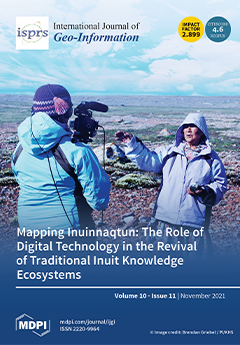The Abu-Dabbab area, located in the central part of the Egyptian Eastern Desert, is an active seismic region where micro-earthquakes (≈M
L < 2.0) are recorded regularly. Earthquake epicenters are concentrated along an ENE–WSW trending pattern. In this study, we used morphological indexes,
[...] Read more.
The Abu-Dabbab area, located in the central part of the Egyptian Eastern Desert, is an active seismic region where micro-earthquakes (≈M
L < 2.0) are recorded regularly. Earthquake epicenters are concentrated along an ENE–WSW trending pattern. In this study, we used morphological indexes, including the valley floor width-to-valley floor height ratio (V
f), mountain front sinuosity (S
mf), the asymmetry factor index (A
f), the drainage basin shape index (B
s), the stream length–gradient index (S
L), hypsometric integral (H
i) water drainage systems, and a digital elevation model analysis, to identify the role of tectonics. These indexes were used to define the relative tectonic activity index (RTAI), which can be utilized to distinguish low (RTAI < 1.26), moderate (RTAI = 1.26–1.73), and high (RTAI > 1.73) tectonic activity signals all over the study area. Firstly, our results indicate low to medium tectonic activity and general anomaly patterns detected along the major tectonic zones of the study area. Secondly, based on most of the low to medium tectonic activity distributed in the study area and the detected anomalies, we discuss two potential drivers of the seismicity in the Abu-Dabbab area, which are fault-controlled and deep-rooted activities.
Full article





